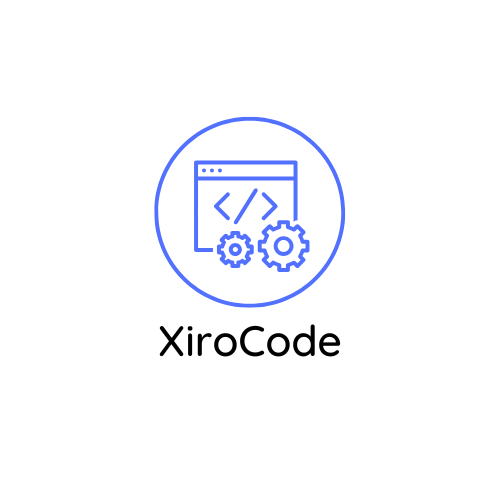In a world where apps seem to pop up faster than popcorn in a microwave, web application software development stands at the forefront of innovation. It’s not just about creating something that looks good; it’s about crafting experiences that make users wonder how they ever lived without them. From e-commerce platforms to social media giants, the right web app can transform a simple idea into a digital phenomenon.
Web Application Software Development
Web application software development plays a crucial role in the modern technological ecosystem. It facilitates the creation of interactive platforms that engage users effectively and drive business growth.
Definition And Importance
Web application software development refers to the process of designing, building, and maintaining applications that run on web browsers. These applications allow users to perform tasks over the internet, enhancing accessibility and convenience. The importance of these applications lies in their ability to streamline operations, provide real-time data, and improve user engagement. Businesses leverage web applications to reach broader audiences, optimize workflows, and gain competitive advantages in various industries.
Key Components
Key components of web application software development include a user interface, server-side logic, and database management. A user interface promotes interaction, making it essential for user experience design. Server-side logic drives functionality, handling requests, and processing data efficiently. Database management stores and retrieves information, ensuring data integrity and availability. Each of these components works together to create a seamless application that meets user needs and business objectives.
Development Methodologies

Various methodologies guide web application software development, shaping the process and ensuring efficient outcomes. Two prevalent methodologies include Agile development and the Waterfall model.
Agile Development
Agile development emphasizes flexibility and customer collaboration. Teams work in iterative cycles known as sprints, often lasting two to four weeks. Each sprint results in a potentially shippable product increment. Frequent reassessments of requirements lead to adjustments based on user feedback. This approach fosters rapid adaptation to changes, enhances responsiveness to market demands, and encourages ongoing improvement throughout the development cycle. Tools like Scrum and Kanban support Agile practices, promoting team communication and transparency.
Waterfall Model
The Waterfall model follows a linear and sequential approach. Each phase, such as requirement analysis, design, implementation, testing, and maintenance, occurs in order. Teams complete one phase before moving to the next, minimizing overlap. This structured methodology suits projects with well-defined requirements, facilitating easier management. However, changes in requirements during development can pose challenges. The Waterfall model’s clarity in documentation aids stakeholder communication, making it easier to track progress and deliverables. It is ideal for projects where specifications will remain stable throughout the development process.
Technologies Used In Web Application Development

Web application development relies on various technologies that contribute to creating dynamic and interactive user experiences. These technologies are categorized into front-end and back-end components.
Front-End Technologies
Front-end technologies focus on the visual aspects of web applications. HTML provides the structure by defining the content and layout. CSS enhances aesthetics, enabling designers to create visually appealing interfaces. JavaScript adds interactivity, allowing users to engage with applications seamlessly. Frameworks like React and Angular streamline front-end development, offering reusable components that save time. Additionally, tools such as Bootstrap facilitate responsive design, ensuring applications function well on diverse devices.
Back-End Technologies
Back-end technologies handle the server-side functionality of web applications. Languages like Python, Ruby, and PHP are common choices for writing server code. Frameworks such as Django for Python and Ruby on Rails for Ruby enable rapid development through pre-built components. Database management systems like MySQL and MongoDB store and retrieve data efficiently. API integration allows different applications to communicate, enhancing functionality. Furthermore, cloud services like AWS and Azure provide scalable infrastructure to support growing web applications.
Tools And Frameworks

Web application software development relies on a variety of tools and frameworks to enhance efficiency and effectiveness. These resources simplify the development process, enabling developers to create robust applications.
Popular Development Tools
Developers often use integrated development environments (IDEs) like Visual Studio Code and IntelliJ IDEA for coding. Version control systems such as Git and platforms like GitHub support collaboration and code management. Code deployment is streamlined with tools like Docker and Jenkins, which automate the process. Additionally, testing frameworks like Selenium and JUnit are vital for ensuring application quality. For design, tools like Figma and Adobe XD aid in creating user-friendly interfaces.
Framework Comparisons
Front-end frameworks like React, Angular, and Vue.js each offer unique features. React excels in creating single-page applications with reusable components. Angular provides a developer-friendly structure and strong tooling for larger applications. Vue.js impresses with its simplicity and adaptability for small to medium projects. On the back-end, Django and Ruby on Rails stand out for their rapid development capabilities. Django brings robust security features, while Ruby on Rails emphasizes convention over configuration. Each framework carries strengths, catering to different development needs and project objectives.
Challenges In Web Application Development
Web application development faces several challenges that impact performance and security. Addressing these issues is crucial for delivering robust applications.
Security Concerns
Security remains a top priority in web application development. Applications often store sensitive user information, making them attractive targets for hackers. Implementing strong authentication mechanisms and regularly updating software helps mitigate these risks. Developers must also adhere to security best practices, such as validating user input and employing encryption for data transmission. Regular security audits assist in identifying vulnerabilities and ensuring compliance with security standards. Ultimately, a proactive approach to security significantly reduces the likelihood of breaches.
Performance Issues
Performance issues can drastically affect user experience and application success. Slow loading times frustrate users and increase bounce rates. Optimizing code and utilizing efficient algorithms enhance application speed. Developers should also consider minimizing HTTP requests and using content delivery networks (CDNs) for faster content delivery. Regularly monitoring performance metrics, such as server response times, allows for timely adjustments. Additionally, employing caching strategies improves load times and overall responsiveness. Prioritizing performance leads to better user satisfaction and higher engagement rates.
Future Trends In Web Application Development
Web application development is poised for exciting changes driven by innovation and evolving user needs. Keeping abreast of emerging technologies and best practices ensures developers create cutting-edge applications.
Emerging Technologies
Artificial intelligence is increasingly integrated into web applications, enhancing user experience through personalized content and chatbots. Progressive web apps blur the line between web and mobile applications, offering offline capabilities and fast load times. Additionally, low-code and no-code platforms empower non-developers to create applications, broadening participation in software development. Serverless architecture optimizes resources, allowing developers to focus on code rather than infrastructure management. Real-time applications gain traction, enabling instant updates for users, crucial for sectors like finance and e-commerce.
Best Practices
Prioritizing user experience is essential; intuitive navigation and mobile responsiveness should dominate design considerations. Regular code reviews enhance quality, catching issues early and improving maintainability. Version control systems streamline collaboration among teams by tracking changes efficiently. Implementing automated testing guarantees that applications remain reliable throughout updates. Monitoring application performance post-launch is crucial; it identifies bottlenecks and facilitates prompt adjustments, ensuring optimal functionality. Data security practices, including encryption and compliance with regulations like GDPR, safeguard user information, fostering trust and loyalty.
Conclusion
Web application software development is a vital component of today’s digital ecosystem. As businesses strive for innovation and improved user engagement, understanding the intricacies of this development process becomes essential. By leveraging the right methodologies and technologies, organizations can create applications that not only meet user needs but also drive business success.
Addressing challenges like security and performance is crucial for maintaining user trust and satisfaction. As the landscape continues to evolve with emerging technologies, staying informed about best practices will ensure that developers can deliver high-quality applications. The future of web application development holds exciting possibilities that promise to shape the way users interact with digital platforms.

